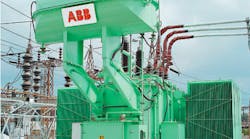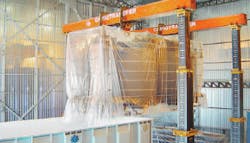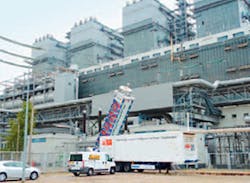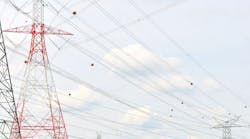The rapidly changing and dynamic business environment in which utilities and industries operate is defined by numerous paradigms. Challenges common to the different sectors include the following:
- Secure the high reliability of an aging fleet of assets
- Ensure availability of the electrical system, especially during peak periods
- Increase flexibility of grid components to cope with new types of energy production and new types of electrical loads
- Apply efficient maintenance strategies to restore asset performance within planned and shortened outages
- Use new solutions to optimize asset management by reducing life cycle costs and total cost of ownership
- Favor environmentally friendly technologies and processes
- Secure required technical expertise to maintain legacy asset through training of new staff
Meeting these challenges means new solutions are needed to maintain the installed base of assets as well as when refurbishing, repairing or upgrading legacy transformers.
One way to control maintenance costs while achieving highly reliable power delivery with aged assets is to move from traditional time-based maintenance schemes to condition-based maintenance or reliability-centered maintenance programs.
Condition-based maintenance
Implementing a solid, condition-based maintenance program requires a good understanding of the condition of each asset, as well as their importance in the electrical network.
An approach based on international statistics of transformer reliability is a useful first step in estimating maintenance and investment budgets. However, experience shows that each unit must be considered specifically in order to make an informed decision about maintenance, relocation, retrofitting or replacement.
The difficulty in selecting an assessment methodology is choosing the right level of diagnosis in order to draw a reliable conclusion at a reasonable cost level.
In the late 1990s, ABB developed a modular, three step approach, in order to meet different expectations in terms of population size, level assessment and available budget [1] ➔ 1.
1 Example of a fleet screening survey
Step 1: Fleet screening survey:
A quick scan of a large population (20 to 200 units) collects easily accessible data, such as unit name plate data, oil and dissolved- gas-in-oil data, load profile, history of the unit and sister units.
This first step gives asset managers an overview of the "as-found condition" of their assets. It provides relevant inputs for maintenance or investment budget strategy, and is also used to select units for further investigation.
Step 2: Condition assessment
At this stage, transformer design experts focus on a smaller number of units (10 to 20) identified in step 1. They use modern design rules and tools to evaluate the original design. Advanced diagnostic tests are performed to assess each of the principal properties of the transformer in a structured way: mechanical status (frequency response analysis, vibration signature), thermal status (dielectric response analysis), electrical status (partial discharge tests) of the active part and the condition of the accessories such as tap changers, bushings, over-pressure valves, air-dryer system, pumps and relays.
This assessment leads to an estimate of each transformer's risk of failure, and defines action plans to improve the reliability of each unit.
Step 3: Expertise
The number of units to be further analyzed is typically limited to two or three out of a population of 100 units. International experts using state of the art design and simulation tools are involved.
This third module of the assessment process provides accurate information with respect to overloading transformers, enhancing their performance (power or voltage increase) or extending their lifetime.
Priceless information
uch a modular methodology provides valuable inputs to end-user staff at different management levels, and enables them to make informed decisions that will ensure high reliability and availability of installed assets ➔ 3. It helps to reduce the risk of unplanned outages, and to define a proper maintenance strategy and associated budget. It enables them to make the best use of available budgets by investing in those critical units that really must be maintained or exchanged. Assessment reports can also be used in discussions with insurance companies.
|
3 Sucess story: Getting the most from a transformer When a utility company in Brazil needed more power and overload capacity for a 26-year-old transformer, remanufacturing seemed the only solution. Not only did ABB upgrade the 15 MVA transformer to 25 MVA, but they also made the unit greener by replacing its mineral oil insulation with BIOTEMP fluid. The benefits for the customer included an overload duration of four hours up to 23 MVA, as well as a reduction in the risk of toxicity and fumes. Biodegradable BIOTEMP fluid ensures little or no clean-up costs in case of leakage, as contamination is reduced. Similarly, when an aluminum mining company in Switzerland faced the challenge of increasing capacity by 15 percent, the solution again was to upgrade their 38-year-old transformers and 16-year-old rectifiers. The payback for the investment was three years. To meet the customer`s requirements, a feasibility study was carried out along with a condition and risk assessment, providing three different options: invest in new replacement units; refurbish and repair; refurbish, repair and monitor. The customer chose the refurbish and repair option with online monitoring. As a result the company not only increased production by 18 percent (3 percent more than was originally expected), the old transformer gave four additional years without loss of production. |
Valuable information to support asset managers in their decisions is also obtainable via on-line monitoring. [2] These solutions have been widely developed in the past decade and installed in increasing numbers of transformers. The technical demands of smart grids are driving the emergence of new technologies that monitor transformers with smaller ratings. At the same time, the needs of higher ratings are evolving from simple alarms and break-of-trend analysis to the ability to provide online diagnosis, prognosis and recommended actions.
As a consequence, ABB has developed sensors suitable for use on distribution transformers, but on the other side of the portfolio are high-end devices enabling the kind of intricate analysis that will soon match the detail available with off-line diagnostic studies. These devices include products for multi-gas sensing, frequency response analysis, partial discharge, transients recording, high precision bushing and tap changer monitoring.
Last but not least, products are now available that can turn raw data into actionable information at either the transformer level or a fleet level. New methods of communication as well as information technology solutions are being used to efficiently transfer data, store large quantities of data over decades and easily retrieve information that can be delivered remotely to different stake holders (CEO, CFO, asset managers, operation, maintenance) in a format suitable to their specific needs.
The economic side of transformer fleet management.
Deregulation, increased competition, cost cutting and the need to balance investments are making it imperative to know the exact health of the installed base of power transformers. The technical complexity of these devices and their high capital cost is driving a need to evaluate the economics of the installed base.
ABB has developed an economic model that can be applied to either a fleet of transformers or an individual unit. [3] The criteria typically used in such a model can be safety, age, operational condition, availability/ reliability of the unit, maintainability, environmental concerns, legislation and the inherent risk of, and consequential costs of a fault. Comparative investment scenarios and sensitivity studies can be run by varying the replacement year or maintenance of the unit. For each scenario the associated net present value is calculated as an input to decide on the best asset management strategy.
By identifying the "critical units" in need of imminent attention and combining this information with the enterprise's strategy for its power supply infrastructure, an evaluation is created that considers whether to refurbish or replace the unit. With this information, managers can set up a maintenance plan for non-critical units that still need attention, to ensure an uninterrupted power supply.
With screening, capital expenditure can be steered to the units most in need, and the investment plan can be evaluated for different service options in a pre-set time frame eg. 2012 to 2042.
Implementing the action plan: maintenance and repair technologies
Depending on the assessed condition, the following corrective actions can be considered, evaluated and implemented:
- Refitting the gaskets, oil processing, oil regeneration, drying the active part to improve the general condition of the transformer and reduce the aging process.
- Online oil regeneration has technical and economic advantages when applied to old transformers with aged, acidic oil. The process is more environmentally friendly than oil replacement, and demonstrates much better efficiency over the long term. This is a very efficient alternative solution to passivation, since it enables definitive removal of corrosive compounds from corrosive oils, thus avoiding the risk of copper sulphide formation.
- Reclamping the windings and the core, checking the cleats and lead structure to improve the mechanical condition of the unit.
- Retightening connections of the active part, adding new shielding, cleaning the contacts of the off-load tap changer to improve electrical performance.
- Overhauling the on-load tap changer, maintaining the bushings, the cooling system, the fans, the pumps, the relays to increase the reliability of the accessories and thus of the transformer.
- Drying out of the active part using a low frequency heating (LFH) system. It is now also a proven solution for drying the transformer core and coil much faster without compromising quality. The drying time could be less than half of that for a traditional hot oil and vacuum process.
- On site repair [4] is an attractive approach to speeding up transformer repair in remote locations, where transportation is difficult or risky, costly and time consuming ➔ 2.
2 Untanking at site of a 440 MVA/550 kV transformer to replace windings
On site repair
ABB on site repair is achieved by bringing the transformer factory setup to the work site. This is done by mobilizing special equipment and tools needed to perform any scope of work, from refurbishment to replacing all windings, which are manufactured in transformer factories under strict quality standards. An ABB onsite repair fulfills exactly the same quality standard as an ABB workshop repair. Such repairs have been done in many countries, on more than 400 transformers, including ultrahigh- voltage transformers, converter transformers, industrial units and shunt reactors. On site repair has saved utilities and industrial users millions of dollars by reducing downtime by four or more weeks, in installations where production losses are worth hundreds of thousands or a million dollars per day.
Due to significant progress in power electronics, new compact high-voltage test systems are now available. Therefore, most of the high-voltage laboratory tests can be performed on site, including Applied and Induced Voltage tests with partial discharge measurements, heat run ➔ 4 and Impulse tests ➔ 5.
These tests can also be performed as an extra quality check on new units after transportation and installation, as a preventive measure within a condition assessment study, or to troubleshoot after a failure to identify and localize a defect, in order to reduce outage time during a repair.
Another alternative for transformer performance enhancement takes into account the increasing demand from end-users to reduce the environmental impact of new transformers and existing assets. New eco-friendly solutions are emerging that combine reusing most parts, innovative material (natural and synthetic ester oils, aramid fibers, amorphous steel) and modern technologies (dry bushings, vacuum tap changers, active control of audible noise). [6–7]
These solutions reduce the risk of fire and pollution, minimize losses and noise, recycle materials and reduce maintenance. They also address current challenges in the power industry beyond safety and environmental concerns. Extending the lifetime of equipment to delay reinvestment; enabling higher power ratings to increase generation profitability or to consistently meet growing demands for transmission and distribution power; extra compact transformers to increase capacity without expanding substation footprint; and improvements in overall substation safety, are just a few examples ➔ 5.
Planned outcomes
The transformers service solutions developed in recent years aim to help transformer owners optimize their lifetime asset management strategy, minimize cost of ownership and overcome the challenge of expertise maintenance. At a long term and strategic level, the condition assessment study gives top management a clear picture of maintenance and renewal investments that are required over the next 20 to 30 years to provide asset reliability and availability. It provides solid information to compare different asset management strategies and choose the approach that best supports the overall technical and financial strategy of the company. A program to extend the lifetime of aged units can, for example, postpone investments in new units and so improve the cash flow of the company.
In the medium term, asset managers obtain the input necessary to make best use of maintenance or replacement budgets. Funds can be allocated to units that show the best return on investment, while reducing technical and environmental operation risks.
In the short term, this method allows the maintenance manager to apply the right maintenance actions in order to secure the needed reliability of aged assets. It also quantifies the benefits of different maintenance actions, supporting decisions based on both technical and financial criteria.
Beyond traditional maintenance actions, innovative technologies developed to improve service quality, sustainability and reduce asset downtime are now available, addressing a complete range of solutions for asset managers.
Pierre Lorin
ABB Power Products, Transformers
Geneva, Switzerland
[email protected]
Pravin Khanna
ABB Power Products, TrafoSiteRepair
Saint Louis, USA
[email protected]
Roberto Asano
ABB Power Products, TrafoSustainableRetrofit
Guarulhos, Brazil
[email protected]
Anders Granö
ABB Power Products, Transformer Service
Västerås, Sweden
[email protected]
-----------------
References
1] Carrander, K., Pettersson, L., Melzer, L., Fantana, N., Lorin, P. (2002, January). Methodology for life assessment on power transformers.TRAFOTECH-2002, Sixth International Conference on Transformers, Mumbai, India.
[2] Stenestam, Bengt-Olof A., Bengtsson, Claes T., Ydersten, Peter N. (2006). Electronic Transformer Control with Monitoring & Diagnostics. CIGRE, Paris, France
[3] Lorin, P. (2004). Optimizing lifetime costs for transformers through informed decisions. ABB Review Special Report Power Services, 10–15.
[4] Mendes, J. C., Marcondes, R. A., Westberg, J. (2002). On Site Repair of HV Power Transformers. CIGRE, Paris, France.
[5] Szczechowski, J. M., Werle, P., (2010). Enhanced Methods of High Voltage Testing of Power Transformers on Site. Proceedings of the International Conference on Condition Monitoring and Diagnosis, Tokyo.
[6] Oliva, M., Asano, R. (2010). New Technologies in Transformer Service. Advanced Research Workshop on Transformers, Santiago de Compostela, Spain.
[7] Asano, R., Page, S., (2012). Reduced environmental impact and improved safety and performance of power transformers with natural ester dielectric insulating fluids. PCIC – Petroleum and Chemical Industry Conference, Prague, Czech Republic.






